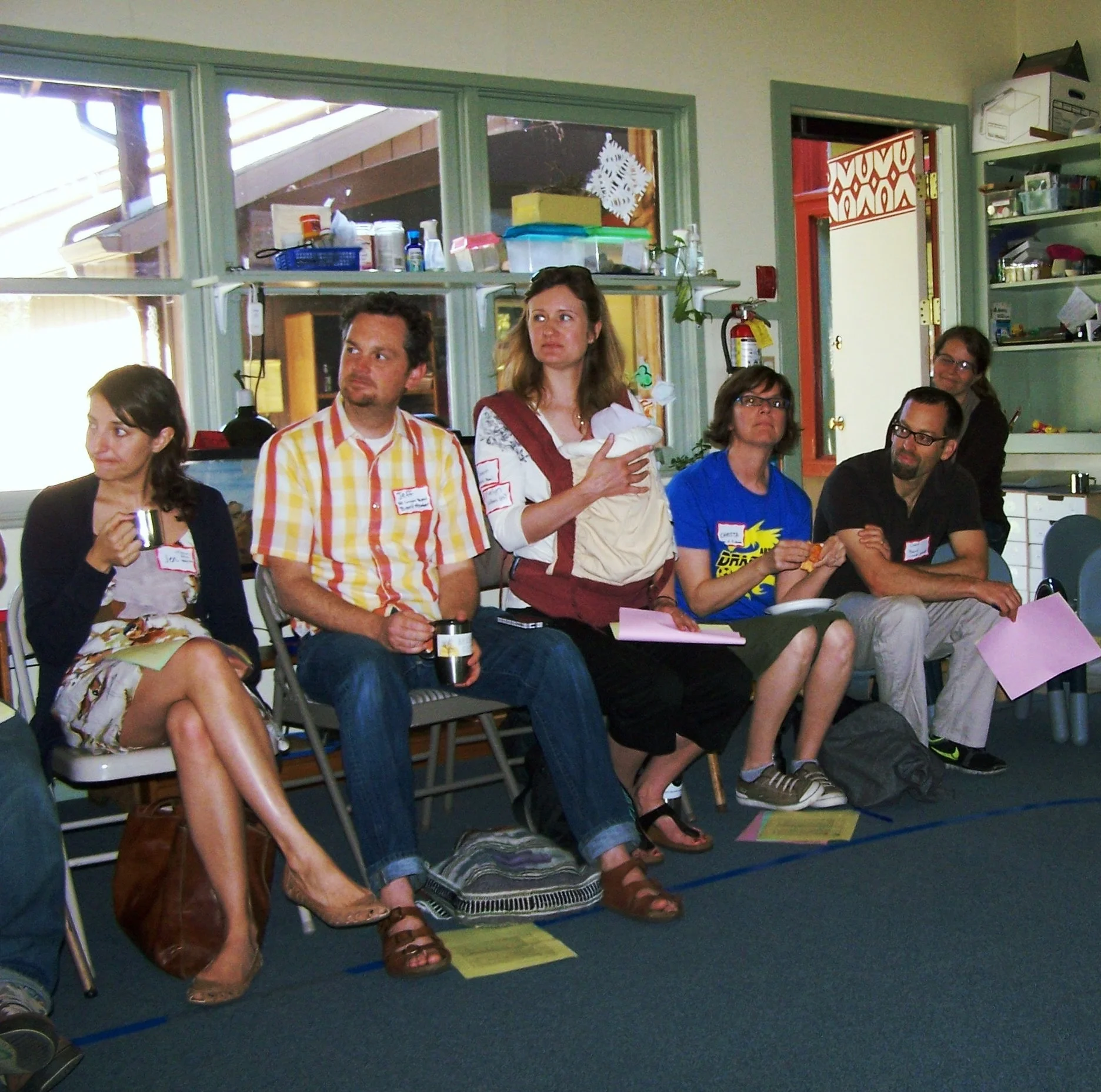Books offer both a “window” into the realities of others, and a “mirror” to see our own realities reflected (a metaphor coined by Emily Style in 1988). The diversity gap in children’s books has been widely noted: while people of color make up nearly 40% of the U.S. population, in an analysis of children’s literature published over the past 25 years, just 13% of books contained multicultural or global content (from Lee & Low Books).
One in four of the world’s people live in South Asia, a region with nearly two billion people and made up of the following countries: Afghanistan, Bangladesh, Bhutan, India, Maldives, Nepal, Pakistan, and Sri Lanka. South Asians have diverse nationalities, religions, cultures, histories, and ways of life (downloadable map here). Through migration starting hundreds of years ago and continuing to the present-day, South Asian communities can now be found in North America, Europe, Australia, the Middle East, sub-Saharan Africa, East Asia, the Pacific Islands, and in Latin America and the Caribbean.
For families with South Asian heritage, there are more options than ever before, with books featuring brown-skinned characters doing everyday activities in the U.S. (e.g., Nina the Neighborhood Ninja and Super Satya Saves the Day ), as well as books about specific food, dress, and culture in distinct regions and countries of origin.
Parents and families play an important role in bringing cultural and historical knowledge to schools where gaps exist, and fostering a sense of global citizenship in their children. Fall is a time when there are several occasions for parents and educators to explore South Asian history and culture, including: the Independence days for Afghanistan (August 9), Pakistan (August 14), India (August 15) and later in the year, Nepal (December 21); the Hindu, Sikh, Buddhist, and Jain festivals of Diwali, Bandi Chhor Divas & Paryushan (usually in October or November based on the lunar calendar); the Nepali Dashain festival (usually in October); sometimes, the Muslim festivals of Eid (depending on the Islamic calendar and where it falls); and the birthdays of independence leaders Mohandas Gandhi (October 2) and Jawaharlal Nehru (November 14, also known as Children’s Day in India).
Spring can also be a good time to introduce different themes related to the Sikh holiday of Vaisakhi, the Zoroastrian & Baha’i holiday of Norooz, the Hindu Holi festival (all of which are usually in March or April based on the lunar calendar); Vesak which celebrates the Buddha’s birthday (usually in May); and Bangladesh’s independence day (March 26), among other holidays.
Basically, regardless of the occasion or time of year, there’s always a way to bring South Asian culture and history to the classroom!
Below is a list of books—focused primarily on ages 3 to 8 years old—to introduce South Asian history and culture to young children whether as a “window” into other global realities or as a “mirror” for students with South Asian heritage. At the end is also a list of recommended books for children aged 10-12 and above. This is not an exhaustive list and is heavy on books about India given the fact that it has a vibrant local publishing industry. Please add your own recommendations in the comments below to make this resource list more thorough. And talk to your local library and school staff about your ideas for making their book collections more diverse and representative.
As a professor of education and a parent, it’s encouraging to see the growth in diverse children’s publishing, and the increasing possibilities these books bring for understanding, awareness, and inclusion.
A great resource for finding most of these books listed below is the online book-seller KitaabWorld. Special thanks to KitaabWorld’s founders, Gauri Manglik & Sadaf Siddique, for their suggestions and insights on this post.
Struggles for Justice
1. I Will Save the Land, by Rinchin (Author) and Sagar Kolwankar (Illustrator)
This book about a young Adivasi (indigenous) girl in the Chhattisgarh state of India shows how big development displaces families, and one girl’s struggle to resist. Book trailer here.
2. Books about Mohandas Gandhi
These books introduce children to issues of colonialism, the struggle for independence, and Gandhi’s leadership in the subcontinent’s freedom movement.
2a. A Taste of Freedom: Gandhi and the Great Salt March, by Elizabeth Cody Kimmel (Author), Giuliano Ferri (Illustrator)
2b. Grandfather Gandhi, by Arun Gandhi & Bethany Hegedus (Authors), Evan Turk (Illustrator)
3. The Boy Who Asked Why: The Story of Bhimrao Ambedkar, by Sowmya Rajendran (Author), Satwik Gade (Illustrator)
This book tells the story of Bhimrao Ambedkar, a leading figure in the Indian independence movement and a champion of the rights of Dalits (formerly called “untouchables”) to be free from caste discrimination.
4. Malala, a Brave Girl from Pakistan/Iqbal, a Brave Boy from Pakistan: Two Stories of Bravery, by Jeanette Winter (Author, Illustrator)
This book features two young heroes from Pakistan who stood up for the right to education in their communities and were met with backlash for doing so.
Girl Power/Inspiring Women
5. Malala’s Magic Pencil, by Malala Yousafzai (Author), Kerascoët (Illustrator)
Written by the youngest-ever Nobel Peace Prize Winner, Malala Yousafzai, about her wish as a child for a magic pencil.
6. Sarla in the Sky, by Anjali Joshi
This book tells the story of India’s first female pilot in a beautifully-drawn book.
7. One Grain Of Rice: A Mathematical Folktale, by Demi (Author)
This book showcases a mathematically talented girl who outsmarts a greedy king who hoards all the rice for himself.
8. A Pair of Twins, by Kavitha Mandana (Author) and Nayantara Surendranath (Illustrator)
In this beautifully-illustrated story, an unusual “pair” born on the same day are called upon to save the day.
9. Razia and the Pesky Presents, by Natasha Sharma (author)
In this longer book for ages 6 and up, the first female ruler of South Asia from the 13th century, Razia Sultana, is introduced; as is her problem of receiving mystery presents from an unknown source, and her desire to get to the bottom of it.
10. Nasreen's Secret School: A True Story from Afghanistan, by Jeanette Winter (Author, Illustrator)
In this book, Nasreen’s grandmother enrolls her in a secret school and tells of her experiences there.
11. Mina vs. the Monsoon, by Rukhsanna Guidroz (Author), Debasmita Dasgupta (Illustrator)
This book introduces Mina who is upset that the monsoon rains are getting in the way of her playing soccer. While stuck inside, she discovers a secret about her mother.
12. The Why Why Girl, by Mahasweta Devi (Author) and Kanyika Kini (Illustrator)
A children’s book by one of India’s most acclaimed authors, Mahasweta Devi, about a young girl in a village perplexed by why she is told she cannot do certain things because she is a girl, and from a certain social background. Text-heavy but a unique book with beautiful illustrations.
Holidays/Religious Celebrations
13. Books about Diwali
Diwali, also known as the festival of lights, is a fall festival that is celebrated by Hindus, Sikhs, Buddhists, and Jains in different ways, and marks different significant religious occasions.
13a. Amma, Tell me about Diwali, by Bhakti Mathur
This book offers a colorful description of a Hindu family’s celebration of Diwali, including the story of Rama and Sita, as well as contemporary customs. In reading this for my child’s pre-school, I skip some pages in the middle to keep it a bit shorter for younger kids.
13b. Diwali: A Cultural Adventure, by Sana Sood (Author), Rubina Hoda (Illustrator)
This rhyming book is a good introduction to the Hindu story of Diwali in an accessible way. The last pages have a larger perspective on the meanings of the festival.
13c. Let’s Celebrate Diwali, by Anjali Joshi (Author), Tim Palin (Illustrator)
In this book for younger children, a Hindu young girl shares her family’s Diwali traditions and learns about her classmates’ celebrations of the same holiday though they come from different religious backgrounds (Jain, Sikh, and Buddhist).
14. A Dog Named Haku: A Holiday Story from Nepal, by Margarita Engle, Amish Karanjit, Nicole Karanjit (authors), Ruth Jeyaveeran (illustrator)
Two brothers celebrate Kukur Tihar, a day to honor dogs during the Fall festival time in Nepal. In the aftermath of the Nepal earthquake, they search for a specific dog.
15. Festival of Colors, by Surishtha Sehgal and Kabir Sehgal (authors)
This book introduces the Hindu festival of Holi, where colors are thrown on friends, family and neighbors, and spring is welcomed.
16. Books about Eid
Muslims in South Asia and around the world partake in various celebrations, including Eid (literally meaning “feast”). The first marks the end of the 40-days of Ramadan (Eid Al-Fitr), and the second (Eid Al-Adha) is during the Hajj pilgrimage each year.
16a. Night of the Moon, by Hena Khan
Award-winning children’s author Hena Khan explores a Pakistani-American girl’s Eid celebrations through a discussion of its history and the traditions.
16b. Amal’s Eid, by Amy Maranville
Amal is in the 3rd grade and invites readers in to see how his family from Bangladesh celebrates the end of Ramadan with the Eid Al-Fitr festival.
16c. The Best Eid Ever, by Asma Mobin-Uddin (Author), Laura Jacobsen (Illustrator)
In this book, Aneesa misses her parents who are away on the Hajj pilgrimage. Her grandmother helps her find a special way to celebrate Eid that involves helping others.
17. Crescent Moons and Pointed Minarets: A Muslim Book of Shapes, by Hena Khan (author), Mehrdokht Amini (illustrator)
A beautifully illustrated book that takes readers through shapes and the principle components of Muslim faith, as seen through the shapes a child sees.
18. The Truth About the Tooth, by Maria L. Denjongpa (author), Chetan Sharma (illustrator)
A Tibetan folktale about a young boy who keeps forgetting to bring something back from his travels to Sarnath, the place where the Buddha first gave his teachings.
19. Lohri: The Bonfire Festival, by Parveen Kaur Dhillon (Author), Anantdeep Kaur (Illustrator)
This book introduces the Punjabi winter festival of Lohri (usually in January) through rhymed verses.
20. Let's Celebrate Vaisakhi! by Ajanta Chakraborty and Vivek Kumar
This book in the Maya and Neel’s Adventure Series takes the narrators to the Punjab region of South Asia to celebrate the spring festival of Vaisakhi.
21. Mahavira: The Hero of Nonviolence, by Manoj Jain (Author), Demi (Illustrator)
In this book, the teacher Mahavira who founded the Jain religion is introduced as are the principles of nonviolence espoused by adherents to his philosophies.
Everyday Life
22. King for a Day, by Rukhsana Khan (Author), Christiane Kromer (Illustrator)
During the kite festival of Basant in Lahore, Pakistan, Malik is trying to get his kite to fly the highest and best. Malik navigates the kite festival in his wheelchair and counters a bully who appears.
23. A Bhil Story, by Nina Sabnani (author), Sher Singh Bhil (illustrator)
This book which explores the origin stories of the indigenous Bhil community in northern India is vividly painted and demonstrates issues of natural conservation.
24. Magical Fish, by Author Chandrakala Jagat and Illustrator Shakunlata Kushram
Happiness has begun to leak out of the world and one old woman has a plan to bring it back. It involves finding a magical fish in a special green lake. This story is from the indigenous Gond people in central India, and the illustrator uses traditional Gond artwork in the book. A video about the book can be found here.
25. Aamu's Kawandi, by Shrujana N Shridhar
This book is about the Siddi community in South Asia (originating from East Africa and settling in the present day countries of India and Pakistan as early as 600 A.D.). Aamu, a Siddi girl, shares a story of her quilt or “kwandi” that has patchwork with scenes from around her village.
26. Chandra's Magic Light: A Story in Nepal, by Theresa Heine (Author), Judith Gueyfier (Illustrator)
Chandra and her sister learn about a solar-powered lamp and are determined to find a way to get one for their family whose home is in the Himalayan mountains in Nepal.
27. Crane Boy, by Diana Cohn (Author), Youme Landowne (Illustrator)
This book is set in the Himalayan mountain nation of Bhutan and features a boy who, alarmed at seeing fewer cranes migrating each year, decides to take action.
28. Four Feet, Two Sandals, by Karen Lynn Williams (Author), Khadra Mohammed (Author)
Set in a refugee camp in Pakistan, two girls find one sandal each donated by aid workers. In figuring out how to share the sandals, readers are introduced to the realities in the refugee camp.
29. Grandma and the Great Gourd: A Bengali Folktale, by Chitra Banerjee Divakaruni (Author), Susy Pilgrim Waters (Illustrator)
This book by renowned novelist Chitra Banerjee Divakaruni offers a retelling of a Bengali folktale about a grandmother who outwits animals that are trying to eat her as she journeys through the forest.
30. The Story and the Song, Manasi Subramaniam (Author), Ayswarya Sankaranarayanan (Illustrator)
In this Tamil folktale, stories that don’t get told and songs that don’t get sung are determined to find a way to be heard.
31. When the Rain Comes, by Alma Fullerton (author) and Kim La Fave (illustrator)
Set in Sri Lanka, this book tells the story of a girl, Malini, and her family’s experiences during the rainy season.
32. My Chacha is Gay, by Eiynah
This book, which is a bit hard to find for purchase (though several Northern California Bay Area libraries have it), focuses on a diverse family in Pakistan doing everyday things. It features a young boy’s narration about his Chacha (paternal uncle) and his Chacha’s male partner. A video of the book can be found here.
Universal Values:
33. Manjhi Moves a Mountain, by Nancy Churnin (Author), Danny Popovici (Illustrator)
Manjhi uses a hammer and his sheer determination to demonstrate perseverance in creating a pathway from his poor village to a nearby village with schools, a hospital, and markets.
34. Room in your Heart, by Kunzang Choden (author)
This story of generosity is by one of Bhutan’s leading writers, and tells of a woman making room for more and more people in her home. It ends with the moral, “There will always be room in your home, as long as there is room in your heart.”
35 The Clever Boy and the Terrible, Dangerous Animal, by Idries Shah (author), Rose Mary Santiago (illustrator)
This book tells the story of overcoming fears of unknown things/people through a Sufi folktale set in Afghanistan where a boy helps villagers see that something they fear is nothing to be feared at all.
36. Iqbal and His Ingenious Idea: How a Science Project Helps One Family and the Planet, by Elizabeth Suneby (Author), Rebecca Green (Illustrator)
It’s monsoon season in Bangladesh and Iqbal decides to problem-solve by creating a solar cooker for his science fair so that his mother won’t cough so much while cooking on an indoor open fire. This book demonstrates care for others, creativity, and innovation.
37. Chachaji’s Cup, by Uma Krishnaswami (Author), Soumya Sitaraman (Illustrator)
A story about a boy’s relationship with his great uncle who has lived through the violent partition of India and Pakistan. Neel shows his great uncle kindness and compassion through the story.
38. A Bucket of Blessings, by Kabir Sehgal (Author), Surishtha Sehgal (Author), Jing Jing Tsong (Illustrator), Maya Angelou (Afterword)
This book teaches gratitude through a folktale from India about a monkey and a peacock.
Recommendations for 10-12 and up
39. The Breadwinner, by Deborah Ellis
In this book set during the rule of the Taliban in Afghanistan, Parvana has to dress as a boy to be able to earn money for her family. This book describes difficult circumstances, but also introduces young readers to history and geopolitical relations by mentioning how the rise of the Taliban was due to support from the U.S. during the Cold War.
40. Ahimsa, Supriya Kelkar (author)
In this book set in 1942, Anjali, who is 12, is thrust into the Gandhian movement for freedom from British rule on the subcontinent when her mother decides to join in it. There are themes of caste discrimination, gender inequality, and anti-colonial struggles that get raised in this book.
41. Ambedkar: The Fight for Justice, by Srividya Natarajan & S. Anand (Authors), Durgabai Vyam & Subhash Vyam (Illustrators), John Berger (Foreword)
In this beautifully-illustrated graphic novel, the story of Bhimrao Ambedkar is told of his facing caste discrimination in the late 1800s and early 1900s, studying law overseas in New York and London, and ultimately being an independence leader and the crafter of India’s first Constitution in 1950.
42. Step up to the Plate Maria Singh, by Uma Krishnaswami
This story is of a young girl from a Punjabi-Mexican family and set in 1945. Restrictive immigration laws in the early- to mid-1900s only allowed immigrant male workers to migrate from Punjab, resulting in marriages between Punjabi men and Mexican women in agricultural communities in California. The story is about how Maria longs to be on a softball team and the challenges facing her family.
43. Rickshaw Girl, by Mitali Perkins (Author), Jamie Hogan (Illustrator)
This story set in Bangladesh and is about a 10-year old girl, Naima, who wants to help earn money for her family despite gender norms that discourage it.
44. The Night Diary, by Veena Hiranandani
This book is probably better for slightly older (12+) given themes of death and violence related to a girl’s story of enduring the Partition of India and Pakistan in 1947. Through letters to her deceased mother, we learn about what her and her family go through to find a new home.
45. I See the Promised Land: A Life of Martin Luther King Jr., by Arthur Flowers (Author), Manu Chitrakar (Illustrator)
This book is not about South Asian history or culture per se, but tells the story of the life of African-American civil rights leader Martin Luther King, Jr. (and his influences from Gandhian philosophy) in a graphic novel by Indian artist Manu Chitrakar. This beautiful book presents a story known to many young people in the U.S. in a Patua art style from eastern India and Bangladesh.
46. Dear Mrs. Naidu, by Mathangi Subramanian
This book told through the letters a young girl writes to the deceased Indian independence leader she’s named after, Sarojini Naidu, tells a story of educational inequalities and human rights in present-day India.








































